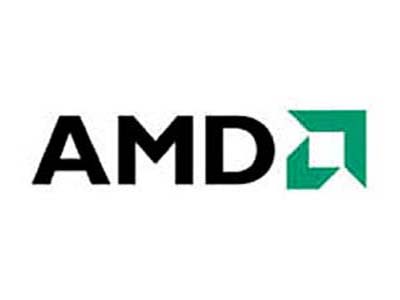AMD Officially Launches Z-60 Chip for Windows Tablets
AMD is entering the tablet space with the launch of its new Z-60 chip. Aimed at performance tablets as thin as 10mm and SFF machines, the Z-60 is touted as AMD's lowest power APU and features support for Windows 8 as well as compatibility with Windows 7.
The Z-60 APU packs AMD's Start Now technology, which enables fast boot times as well as quick resume times. It also features support for USB 3.0, 1080p, HDMI out, and Direct X11. It doesn't look like there's any support for systems other than Windows, so anyone hoping to see an Android slate based on the Z-60 is out of luck for now.
The Z-60 is a dual-core chip with 1MB of L2 cache and HD 6250 graphics. It boasts a 1GHz clock speed and a 4.5W TDP. AMD says the Z-60 is already shipping to partners that are expected to launch systems based on the chip later this year. So, it looks like we won't have long to wait before we see this chip in action.
Microsoft's Surface tablets are launching on the same day as Windows 8, October 26, and we're sure to be inundated with Windows 8 tablets in the weeks and months following. Apparently there'll be Z-60 solutions mixed in with the Intel and ARM-based tablets before the year is out. Stay tuned!
Contact Us for News Tips, Corrections and Feedback
Get Tom's Hardware's best news and in-depth reviews, straight to your inbox.

Jane McEntegart is a writer, editor, and marketing communications professional with 17 years of experience in the technology industry. She has written about a wide range of technology topics, including smartphones, tablets, and game consoles. Her articles have been published in Tom's Guide, Tom's Hardware, MobileSyrup, and Edge Up.
-
tpi2007 This is a power-optimized, especially binned version of the Z-01, which was released last year, which was itself a power optimized, especially binned version of the C-50. The only news here is the new 4.5w TDP of the Z-60 instead of the 5.9w of the Z-01.Reply
Technically speaking, this is still the same 40nm Bobcat APU, with 2 x86 cores at 1 Ghz and a Radeon HD 6250, VLIW 5, 80 core GPU, clocked at 276 / 275 Mhz.
In other words, this has the same performance as the C-50 (or C-60 if you disable Turbo). The difference I think is that both the Z-01 and the Z-60 support DDR3L in addition to the regular DDR3.
Given that it's still manufactured with 40nm technology, and comparing the 4.5w TDP to the original 9w TDP of the C-50, it will be interesting to see how many of these Z-60's AMD will be able to make. -
greghome Why hasn't AMD released the magical Krishna 28nm Brazo successor I have been waiting for since the beginning of the year...... :(Reply -
chomlee I really hope AMD will get thier SH## together with the tablet market. 2 years ago, it was very evident that tablets where more than a fad (although some people still think they are a fad). Unfortunately AMD failed to get into the market and as a result of the recent turndown of desktop/laptop purchases (all as a result of the mobile industry), sales of CPU went down as did AMD's stock price. I never did understand how thier low end systems with the A series chips didn't do that well. They really were a perfect solution for anyone wanting a cheap computer with some gaming capability. Great for college kids.Reply
If they were able to come up with a viable mobile chip that really shook things up, their stock would be a good buy right now. On the other hand, they could fail to see the true market and end up filing for bankrupsy in the comming years. -
jdwii Why are they releasing this on 40nm when Intel will be coming out with their new low power chips soon they should've released this on 32nm die at least and they could of did 28nm die as well hopefully they update this soon before they become dead in the tablet market in the future.Reply
A 28nm updated Brazo is what we want Amd do this with a low TDP of 3.5 watts or less to compete with Arm as well. -
yannigr It's all about price. If it can give the customers the chance to have a X86 tablet at $100 less than Intel tablets, then it will sell. If it not much cheaper then it will be a failure.Reply
I think AMD is doing the right thing giving something that it is already there, that they don't have to produce from scratch. Because we don't know if Windows tablets are going to sell. With prices over $500 could end up being a big failure in the beginning.
